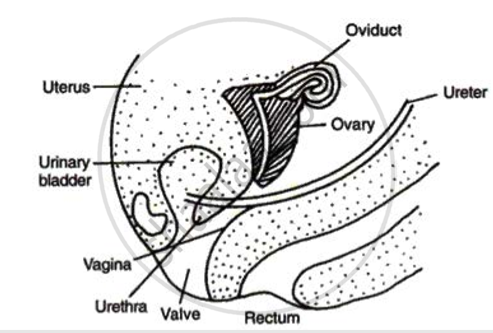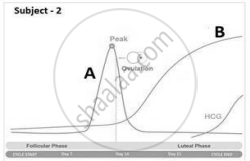Advertisements
Advertisements
प्रश्न
Explain how the uterus and placenta provide necessary conditions for proper growth and development of the embryo after implantation?
उत्तर
- The lining of the uterus thickens and is richly supplied with blood to nourish the growing embryo.
- The embryo gets nutrition from the mother’s blood with the help of placenta. It is embedded in the uterine wall.
- It contains villi on the embryo’s side of the tissue. On the mother’s side are blood spaces, which surround the villi.
- This provides a large surface area for glucose and oxygen to pass from the mother to the embryo. The developing embryo will also generate waste substances which can be removed by transferring them into the mother’s blood through the placenta.
- The child is born as a result of rhythmic contractions of the muscles in the uterus.
APPEARS IN
संबंधित प्रश्न
The following diagram represents the vertical sectional view of the human female reproductive system.

Label the parts indicated by the guidelines 1 to 8.
The diagram alongside is the vertical section of female reproductive organs. Study the diagram and answer the questions that follow:
(i) Name the fully developed part of ovary containing the ovum.
(ii) Name the organ of the female body in which the foetus develops.
(iii) What is ovulation?
(iv) Which two hormones are secreted by ovary?

Name the following:
The parts of the ovary containing mature ovum.
Differentiate
Graffian follicle and Corpus luteum.
Generally, every month, __________ ovum is released in the abdominal cavity alternately from each ovary.
Which of the following is not a part of female reproductive system?
Identify the term used for isthmus.
Womb is used to refer ______.
To answer the question, study the graphs below for Subjects 1 and 2 showing different levels of certain hormones.


If the peak of Hormone A does not appear in the study for Subject 1, which of the following statement is true?
Capacitation occurs in:
